The winners of the inaugural Biotechnology and Biological Sciences Research Council (BBSRC) science photo competition. The winner of each category receives £500 worth of vouchers to purchase photographic equipment. A runner up prize of £100 of vouchers is also awarded in each category. There is one overall winner of the competition who receives £700 of vouchers.
This image made by Thomas Endlein, University of Cambridge wins the Biotechnology and Biological Sciences Research Council (BBSRC) science photo competition. It shows an Asian Weaver ant, upside down on a smooth surface, and carrying a weight in its jaws.
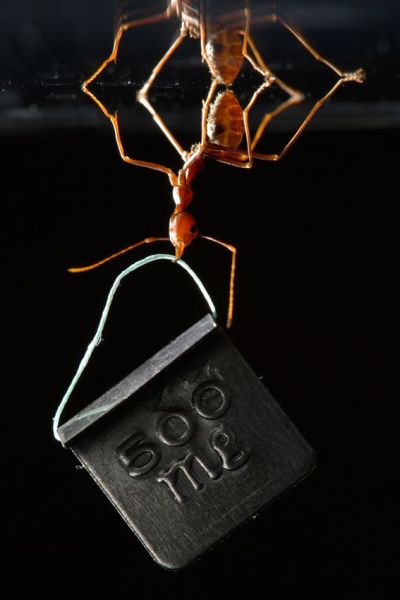
Asian Weaver ants (Oecophylla smaragdina) can carry weights of more than 100 times their own body weight whilst upside down on a smooth surface. To do this, they have incredibly sticky pads on their feet. However, this does not stop them from running quickly across such surfaces. Research has revealed how they cope with the conflict of sticking to a surface but not getting stuck.
Weaver ants are known for building nests using leaves woven together with silk. They are very territorial and their tendency to defend against intruders can make them a useful tool in controlling agricultural insect pests, avoiding the need for chemical insecticides. They have traditionally been used in this way in Chinese and Southeast Asian citrus orchards for at least 1,500 years.
This image made by Jolyon Troscianko, University of Birmingham wins the Concepts category in the Biotechnology and Biological Sciences Research Council (BBSRC) science photo competition. It shows a New Caledonian crow using a stick to fish food out of a small hole.
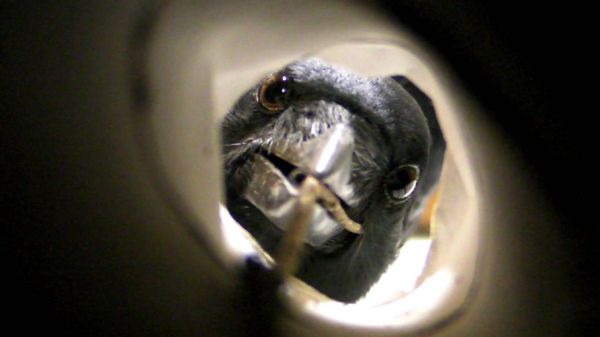
New Caledonian crows use stick tools for ‘fishing’ wood-boring beetle larvae from their burrows in decaying tree trunks. They tease the larvae by repeatedly poking them with a tool, encouraging them to defend themselves and bite the tool-tip with their powerful mandibles. Once firmly attached to the tool, the crows carefully withdraw the larvae from their deadwood fortresses. Motion-triggered video cameras recently revealed that individual crows may take years to become proficient at mastering the subtleties of this extraction technique (Bluff et al. 2010, Proc. R. Soc. B). This image is a still taken from film showing this unique predator-prey relationship from the larva’s perspective.
This image made by Emma Foster, University of Leeds, is runner up in the Concepts category in the Biotechnology and Biological Sciences Research Council (BBSRC) science photo competition. It shows a Southern Resident killer whale in Puget Sound, USA.
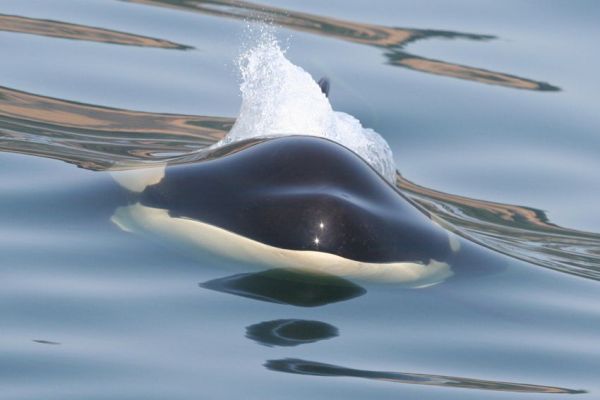
To assess the health of an ecosystem you can look at the health of the top predators in the environment – in this case, killer whales. The Southern Resident killer whale population was classified as endangered in 2006. It is important to increase public awareness of the threats facing these whales and the measures people are going to, to conserve them.
This image made by Emma Foster, University of Leeds, wins the People category in the Biotechnology and Biological Sciences Research Council (BBSRC) science photo competition. It shows a fisherman catching wild salmon in Puget Sound, USA.
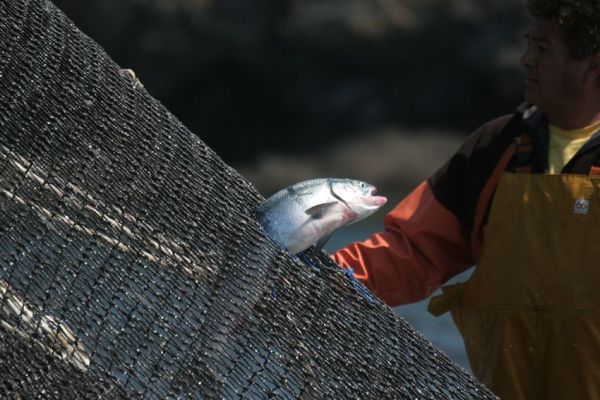
Impacts from human beings such as urbanisation, fishing activities, dam building, forestry, agriculture, mining and poor artificial breeding practices have had a profound effect on the depletion of wild salmon stocks. Not only does this affect the animals that rely on wild fish as their primary food source, but also impacts the local fishing communities. Essential research and recovery plans are being carried out.
This image made by Rob Wüst, University of Leeds, is runner up in the Agriculture, Food, Diet and Health category in the Biotechnology and Biological Sciences Research Council (BBSRC) science photo competition. It is a composite image showing tiny blood vessels from skeletal muscle as viewed under a microscope, with smoke apparently weaving in between.
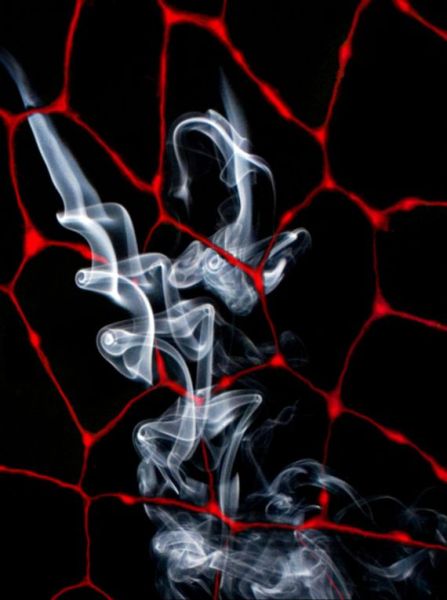
Researchers are investigating the effects of smoking on how well muscles work. Smokers may tend to experience tiredness in their muscles more easily than people who do not smoke, which could be down to how much oxygen reaches the muscle and how it is used once it gets there.
This work can also tell us about the fundamental relationships between oxygen supply and utilisation in skeletal muscle tissue.

GIPHY App Key not set. Please check settings